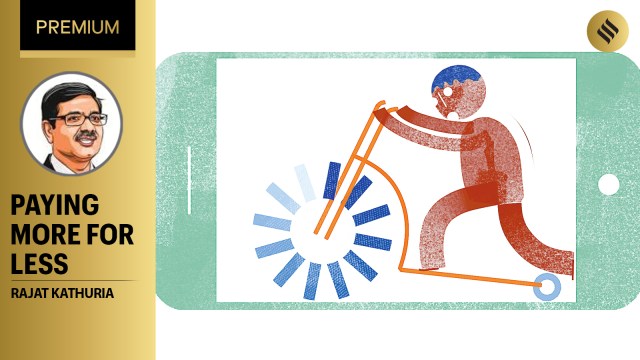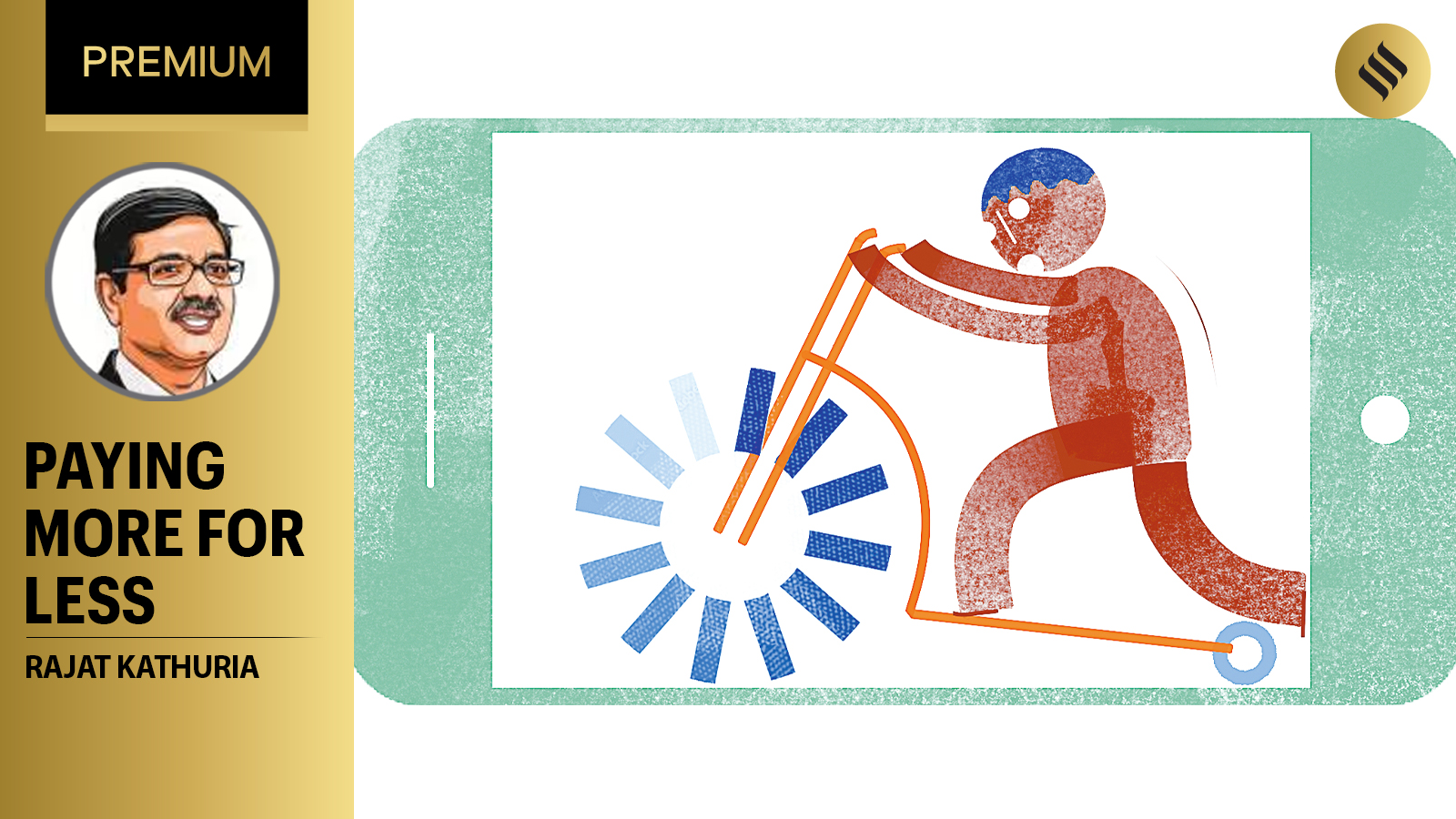
Custom has it that India is an extremely price-sensitive market. This is not surprising given that about 800 million people receive some kind of government support for sustenance. At least half of the other 600 million are labelled as India’s burgeoning middle class, willing to consume and spend on televisions, two-wheelers, washing machines and of course, mobile phones. In aggregate terms, India’s middle class outnumbers the population of Western Europe and is as much as, if not more than the US population. By any standards, India’s middle class is large and therefore the target of multinational corporations of the West and increasingly the East, on the lookout for new markets necessitated by ageing populations of their own. India’s low per capita consumption of automobiles, steel, aluminium, and televisions provides credibility to these claims. The middle class has also been the target of conglomerates in the country that sell soap, detergents, services and, of course, the ubiquitous mobile handset.
The entry of Priya Village Roadshow (PVR) in India in the late 1990s was met with enormous scepticism among several analysts who felt the multiplex experience was doomed to fail at the exaggerated price point. They mentioned that Indians are conscious of what they spend on and would shun the overpriced frills along with the movie itself being presented at an inflated price.
Almost three decades later, PVR has not only survived the Darwinian challenge but has also changed how the Indian middle-class consumer views films. It has also led to other entrants coming into the multiplex market and forever transformed the movie-watching experience. The consumer is willing to spend more and more on food and beverages in addition to the price of a ticket that averaged about Rs 235 in 2021-22. Data show that the spend on food and beverages is more than 50 per cent of the price of the ticket of an average moviegoer. A family of four thus spends Rs 1,500 on average in one visit to the theatre. Watching films in multiplexes, however, is not a mass product, unlike mobile phone services that boast over 1.2 billion connections.
I reckon the statement that India is a price-sensitive market applies relatively more to the consumption of mobile services than watching movies at a multiplex. Yet, several surveys have predictably established that starved of entertainment, the mobile device has become a cradle for it, especially in rural areas. It is a source of consumption of Bollywood, cricket and astrology in that order.
The purpose of the above background is to critique the recent tariff hike for mobile services by 10 to 27 per cent by the triopoly of Jio, Airtel and Vodafone, instigated by Jio. Even after the hike, India continues to be designated, at least anecdotally, as one of the lowest-priced mobile markets in the world. Jio has much to do with this characterisation, for when it began operations it disrupted the data market irreversibly. In September 2016, data tariffs plummeted 90 per cent or more and set off a price war that the sector is still wrestling with. Jio’s market share has gone from virtually nothing to over 40 per cent in value terms today with the rest being shared unequally between Airtel, Vodafone and BSNL in that order.
Airtel and Vodafone together have fewer subscribers than Jio. No one can question the fact that Jio is the new incumbent and arguably worthy of being subject to asymmetric regulation. The Telecom Regulatory Authority of India (TRAI) thus conducted and completed a mandatory examination of the tariff hikes, and unsurprisingly concluded that these satisfy the principles of transparency, non-predation and non-discrimination.
Checking for compliance with new tariff plans is obligatory under extant regulations. If TRAI had to intervene in pricing, it should have done so in 2016 when Jio disrupted data prices by over 90 per cent. From about Rs 225 per GB of data, prices were brought down to Rs 15 in one fell swoop, and remain at that level even after the recent tariff hike. The long-anticipated increase in telecom prices happened after eight years, though even at the old prices, Jio reported a profit of over Rs 5,000 crore in the last quarter of FY24. Perhaps it recognised that perpetuating low tariffs did not weaken Airtel as much as it expected, though it was successful in sapping Vodafone, which continues to struggle for survival having lost over a million customers last month.
Any business, more so telecommunications, reflects the so-called 80:20 Pareto rule, where 80 per cent of the revenue comes from 20 per cent of subscribers. These “elite” subscribers are much less affected by prices than by quality of service, compared to the rest. The vast relatively price-sensitive lot is, however, effectively locked into the system because of the mobile number linkage with bank accounts, Aadhaar among others. Most transactions require an “OTP” these days. While subscribers can, with some suffering, port to another service provider, they are unlikely to port out of the service itself, despite a price increase. In other words, the elasticity of demand for the mobile service is low. Although portability from one service provider to another exists, price-sensitive subscribers may just be moving from the frying pan to the fire.
For such customers, the hike might affect their usage, but it is unlikely to result in desertion from the service itself. Subscribers are thus locked in and hence, there were passionate and angry calls for the public sector BSNL to come to the rescue of subscribers who faced increasing prices from all the private sector operators. Given BSNL’s quality and track record, this however does not seem to be a feasible route at least for now.
The other truth of telecoms in India is that while tariffs might still be the lowest in the world, arguably so is quality. You get what you pay for say the inimitable capitalists from the US. I recall a Davis Cup tie that the artist Ramesh Krishnan was playing in, when the statistician on duty marvelled at Ramesh Krishnan’s over 90 per cent first service percentage. His more illustrious opponent was struggling at 75 per cent. The commentator, Naresh Kumar responded to this stat by saying that the high percentage of first serves had to be offset by their speed. Ramesh Krishnan was serving at half the speed of his opponent.
I sincerely hope that the recent hike in prices is a trigger to improve telecoms’ service quality. TRAI has often taken note of poor quality, but its actions have proven to be inadequate and incomplete. Establishing islands of excellence in sectors is possible, but it will need a lot of hard work from everyone, especially the government.
Kathuria is Dean, School of Humanities and Social Sciences and Professor of Economics at the Shiv Nadar Institution of Eminence. Views are personal



